Triumph Bonneville Bobber Black review
The Triumph Bonneville Bobber Black has a chunkier front end and, naturally, it's now black all over. So is it any different to ride?

The Triumph Bonneville Bobber Black has arrived at a time when other models in the range are selling like hotcakes. Does this one keep up with the hype?
Bobbers have been selling just about as fast as Triumph can make them this year. Supplies were limited in the first quarter but by halfway through 2017, the Bobber was the fourth best-selling motorcycle over 125cc.
It outsold not just every other Bonneville but every other Triumph. Only the Kawasaki Z1000SX, BMW R1200GS and R1200GS Adventure beat it.
No surprise then that Triumph decided it was worth making another variant. It’s the Bobber Black, with a fatter front tyre, extra front disc, thicker forks and lots of black where before there was chrome.
Here's my verdict after riding it at the launch in Malaga.
Triumph Bonneville Bobber Black: Engine
Like the existing Bobber, it's got the ‘High Torque’ version of the 1200cc liquid-cooled Bonneville engine. It makes 77hp, 20hp less than the ‘High Power’ variant found in the Thruxton R. Despite the claim to high torque, it also makes less of that, at 78lbft compared to 82.6lbft.
It makes it lower down though, with peak torque at just 4,000rpm and peak power at 6,100rpm. A snap of the throttle releases an immediate burst of acceleration from way down in the range, enough to quickly fire you past whatever it is you're overtaking. ‘More Punch’ would be a better description for this version of the parallel-twin than ‘High Torque’, but ‘MP’ on the side of the cylinder would take more explaining than 'HT' does.
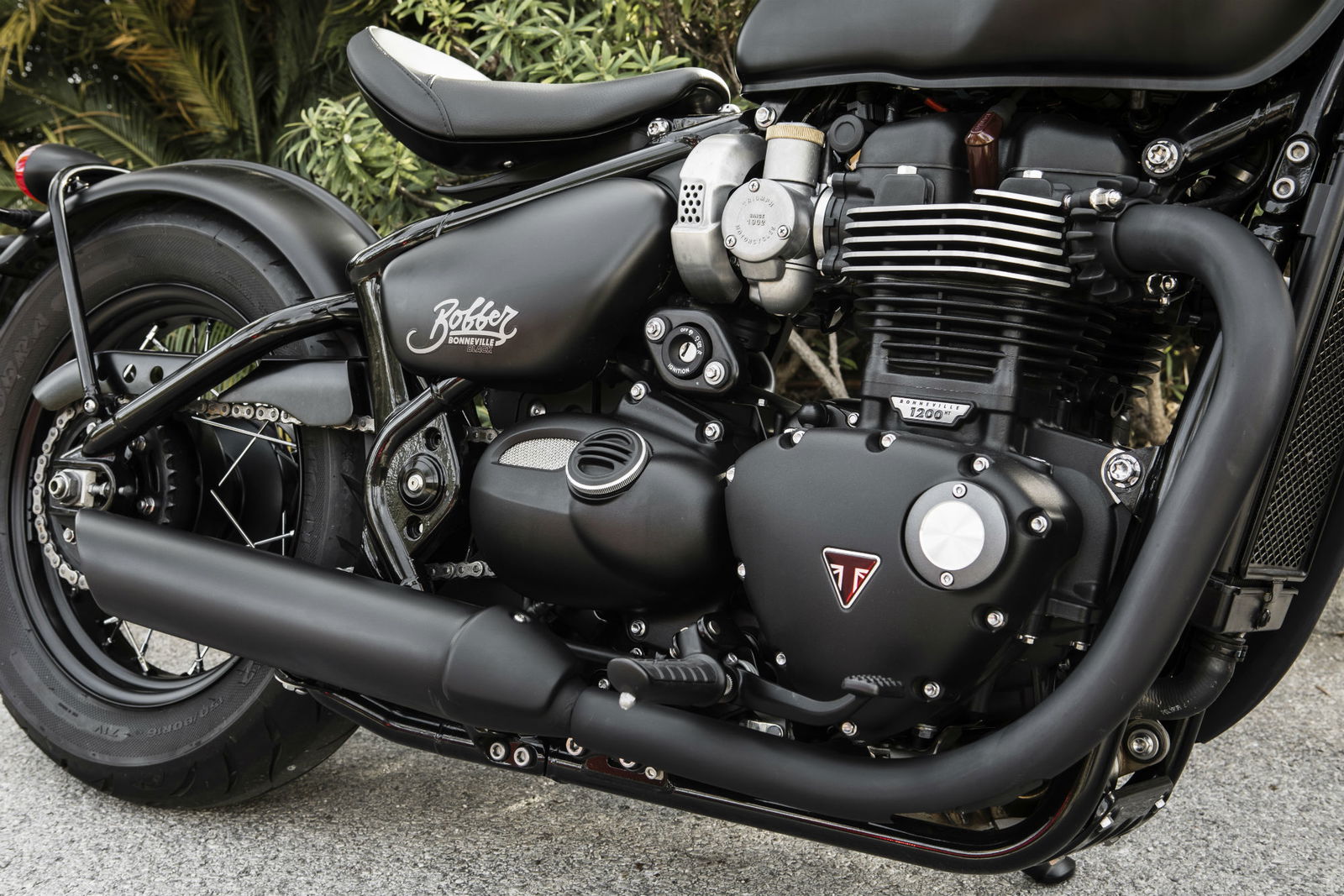
Among the information that can be shown on the small digital display under the analogue speedometer is a numerical rev counter, but don't worry about that. Just change up for more of the same meaty low-range punch, delivered with an aggressive rumble from the newly black-painted and slash-cut peashooter exhausts.
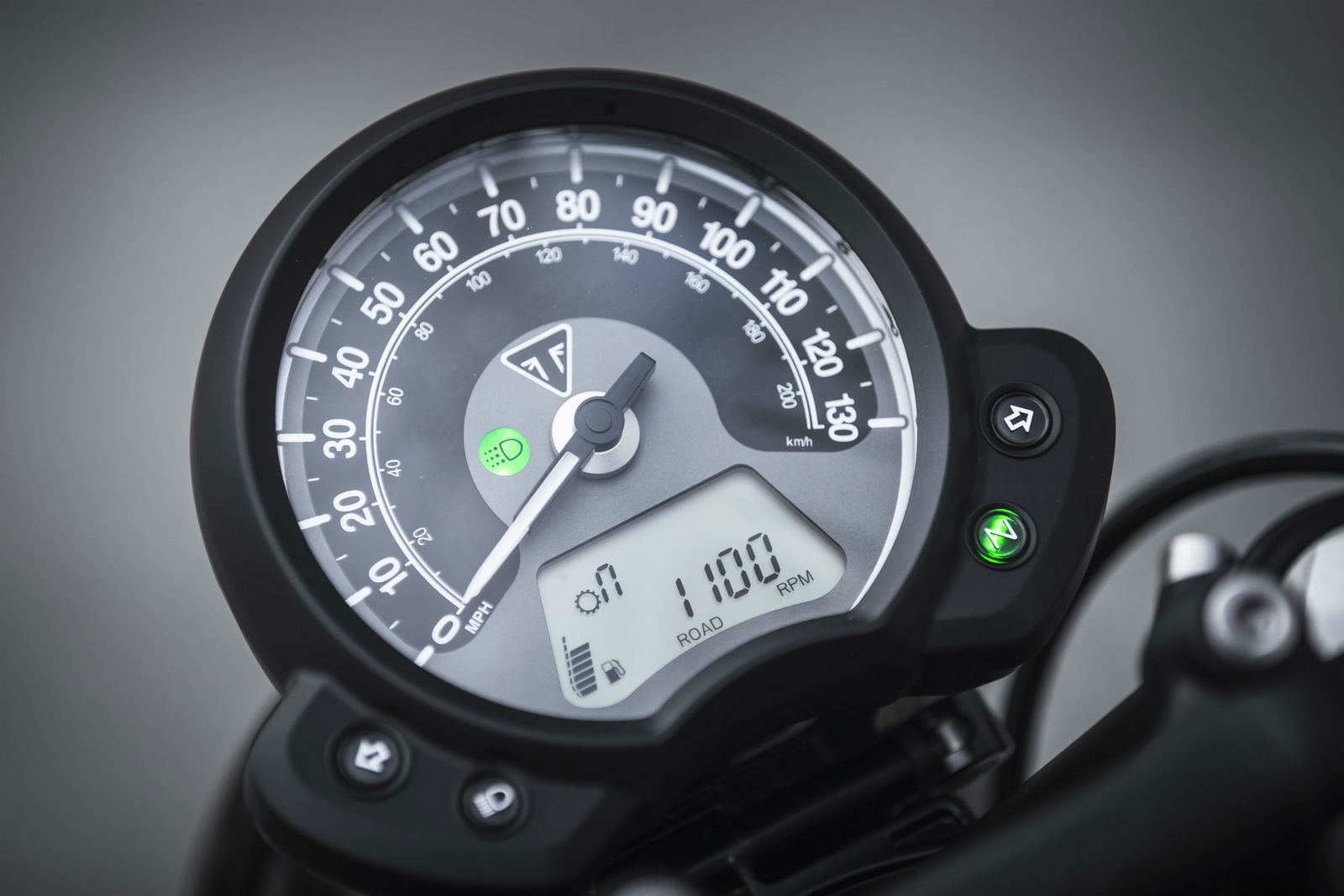
You get traction control with two riding modes: Road and Rain. It rained in Spain, so I made use of the softer throttle response in Rain mode before switching to Road as the skies cleared .
Triumph Bonneville Bobber Black: Handling
The Bobber Black is 9.5kg heavier than its non-black counterpart, at 237.5kg dry instead of 228kg. The black paint’s not heavier; the extra lard is in the updated front end. The forks are now 47mm in diameter instead of 41mm.
The front wheel has shrunk from 19mm to 16mm, offset by a much fatter, 190-section Avon Cobra front tyre, where the Bobber has a 100-section. And it carries that extra front brake disc.
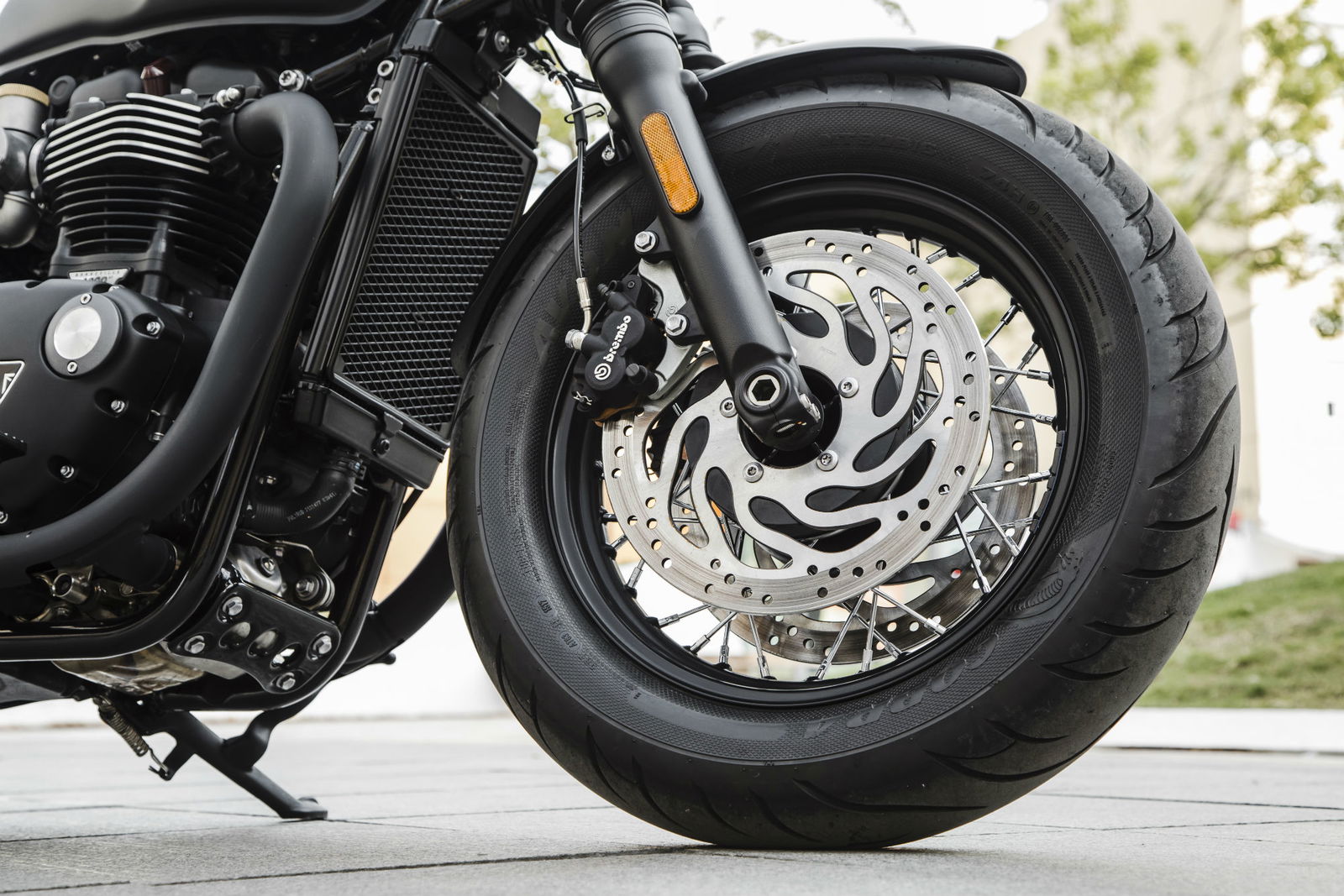
I think the Bobber Black felt a little slower turning than I remember the Bobber itself to be, a little more sluggish tipping into a lean – but it would take a back-to-back test to say definitively.
The Bobber Black still handles well, feeling easier to dominate and more settled through turns than typical of cruisers.
It's got reasonable cornering clearance, so you don't have to think about running out of lean and crashing every time you see a bend. The riding position offers an unlikely level of comfort, with just a bit of a reach to the straight bars.
The seat is firm but still a nice place to sit for several hours, I suspect because its shape evenly distributes the pressure.
The Bobber Black retains the centrally mounted pegs of the standard model (now in black). It’s a better position than feet-forward for feeling in control. A slight annoyance was that if I tried to ride with my toes on the pegs, my heels made contact with the silencers.
Tall riders may also wish for more leg room. I'm only 5’9” and my knees and hips were bent at an acute angle. The room can be increased marginally by undoing a bolt and sliding the seat backwards, but it also makes it lower, and means a longer reach to the bars. The clock can be adjusted to suit the new seating position.


Alternatively, you could always get feet forwards controls, a new option on both this and the base-model Bobber.
Triumph Bonneville Bobber Black: Suspension
The KYB monoshock is the same as the Bobber’s, which means only 77mm of travel. The new fork is from Showa, where the Bobber’s is KYB, but it permits the same amount of wheel travel, at 90mm.
It may be the limited suspension travel, allowed by the fact the bike is not designed to take a pillion, that helps make the Bobber Black adept at coping with the endless corners of southern Spain’s famous Ronda Road, AKA the A397. Lift your weight off the seat and you’ll feel the shock quickly reaching full extension with jolt. You can’t have sloppy rebound when there barely is any rebound.
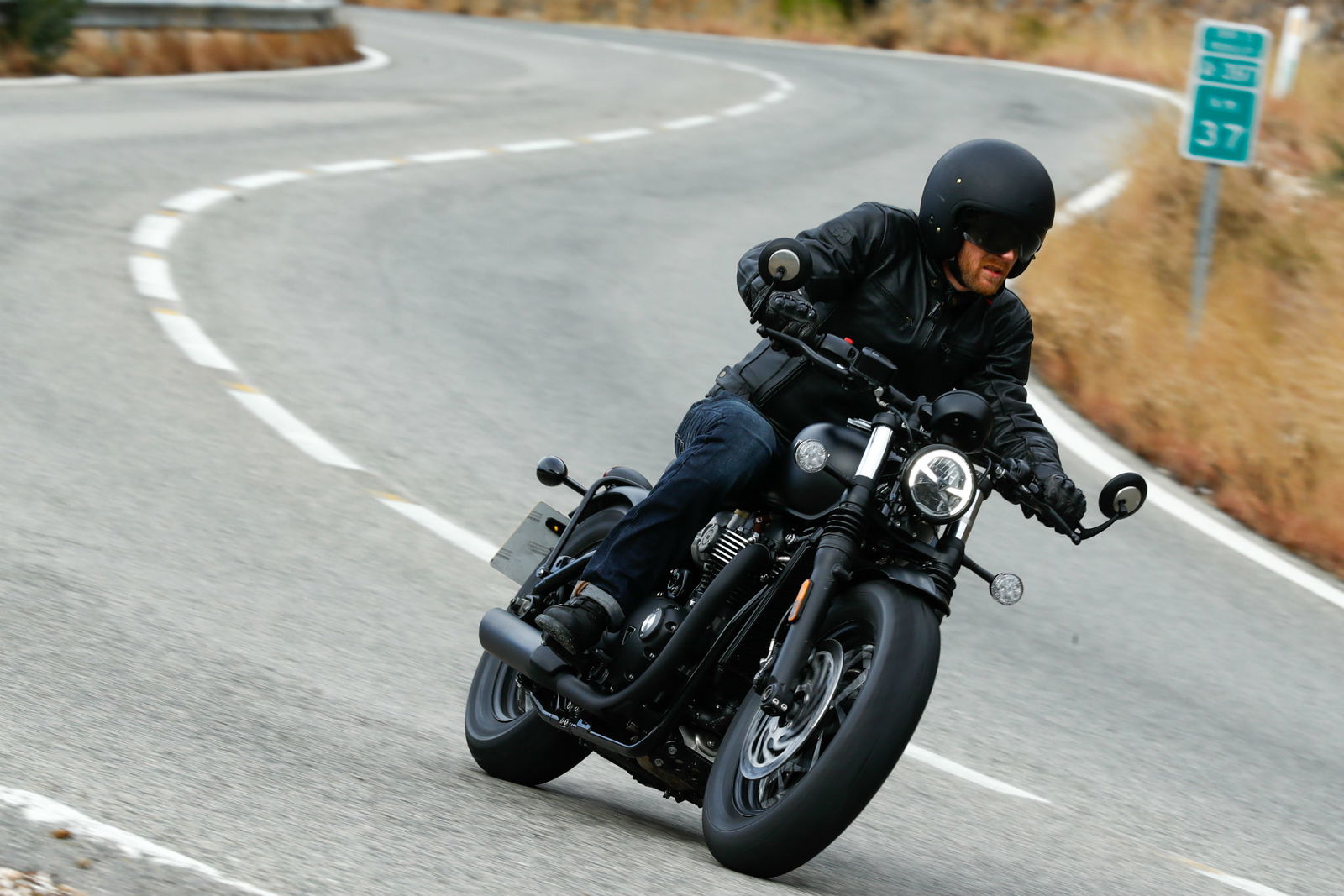
It’s firm, and I’d be tempted to say it might be less likeable on city streets, but I rode the Bobber itself through London earlier this year and remember no cause for complaint.
Both ends are non-adjustable.
Triumph Bonneville Bobber Black: Brakes
My initial thought on applying the new twin-disc front brake with Brembo calipers was ‘Oh. It’s still not immensely powerful.’
It is more powerful than the Bobber’s single disc and two-piston Nissin caliper, delivering more force in response to a lighter pull, so making two-fingered braking easier. But I think the Brembo logo had raised my expectations to a higher level still. They’re still only two-piston sliding calipers, while the discs are the same size as the Bobber’s single one, at 310mm.
Triumph Bonneville Bobber Black: Equipment
You get all the stuff the Bobber’s got: ABS (obviously), the traction control and riding modes I mentioned earlier, plus a torque-assist clutch for a lighter-to-pull lever.
You also get something new: cruise control operated with single button. Press it once to switch on and again to set your speed. Triumph says it also takes ‘one press to cancel’ but I found I had to press and hold it to cancel. Alternatively, you can of course instantly cancel it by touching the front brake or turning the throttle.
It seems a good idea, reducing button-locating related distraction. It does mean you can’t make fine adjustments to the speed you’ve set. If you want to change it, you have to cancel and start again.
The Bobber Black also gains an LED headlight with a daytime running light.
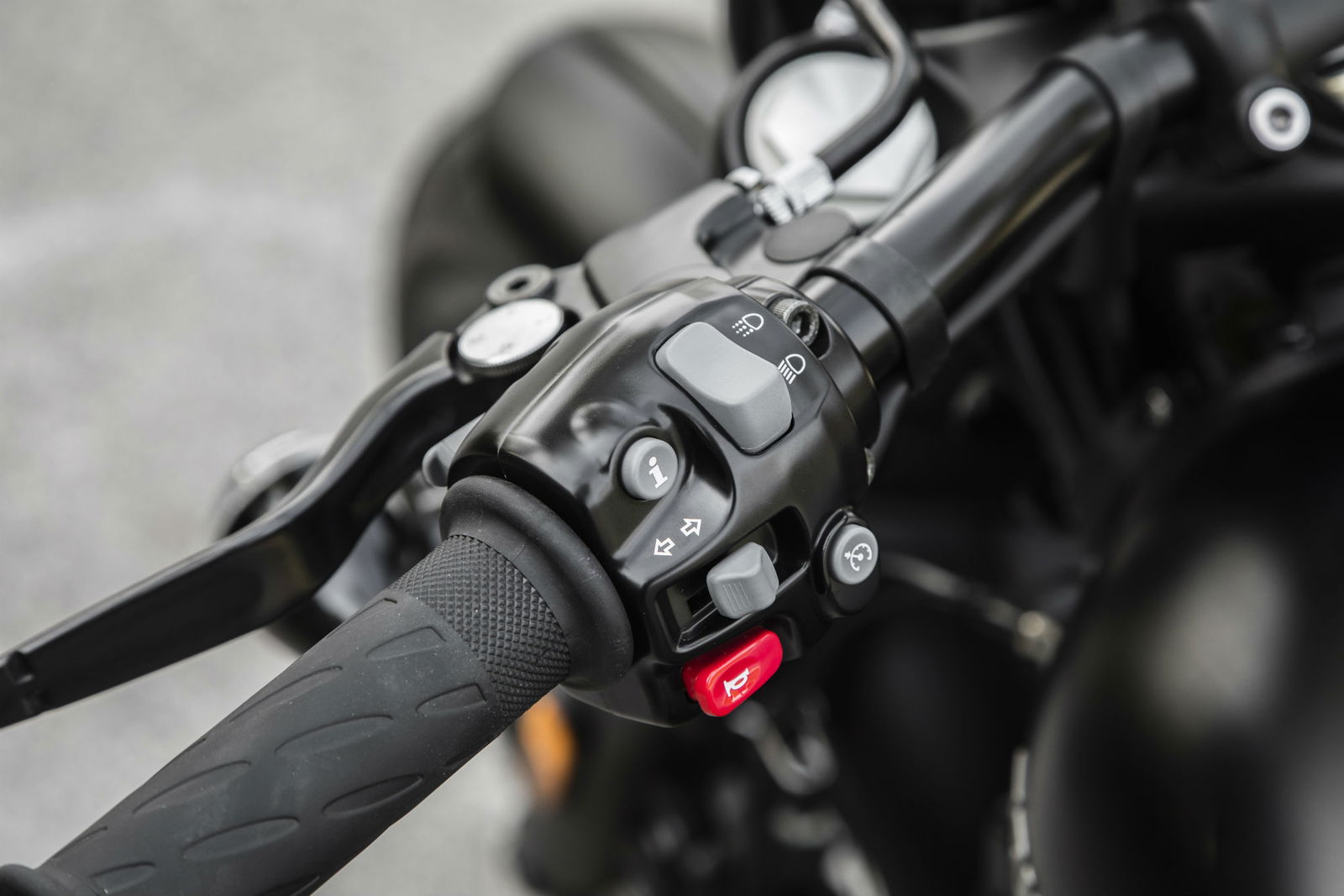
Should I buy the Triumph Bonneville Bobber Black?
The Bobber Black gained almost unanimous praise when we posted about it on social media from the launch, and it’s clear from comments where much of the appeal lies: in the looks.
There’s a nice level of attention to detail in the Bonneville range, for example in the way the fuel injection has been made to look like carbs. The fat front tyre and newly black parts, including the levers, engine covers, handlebars and wheel hubs, add an interesting new styling choice to the Bobber line-up.
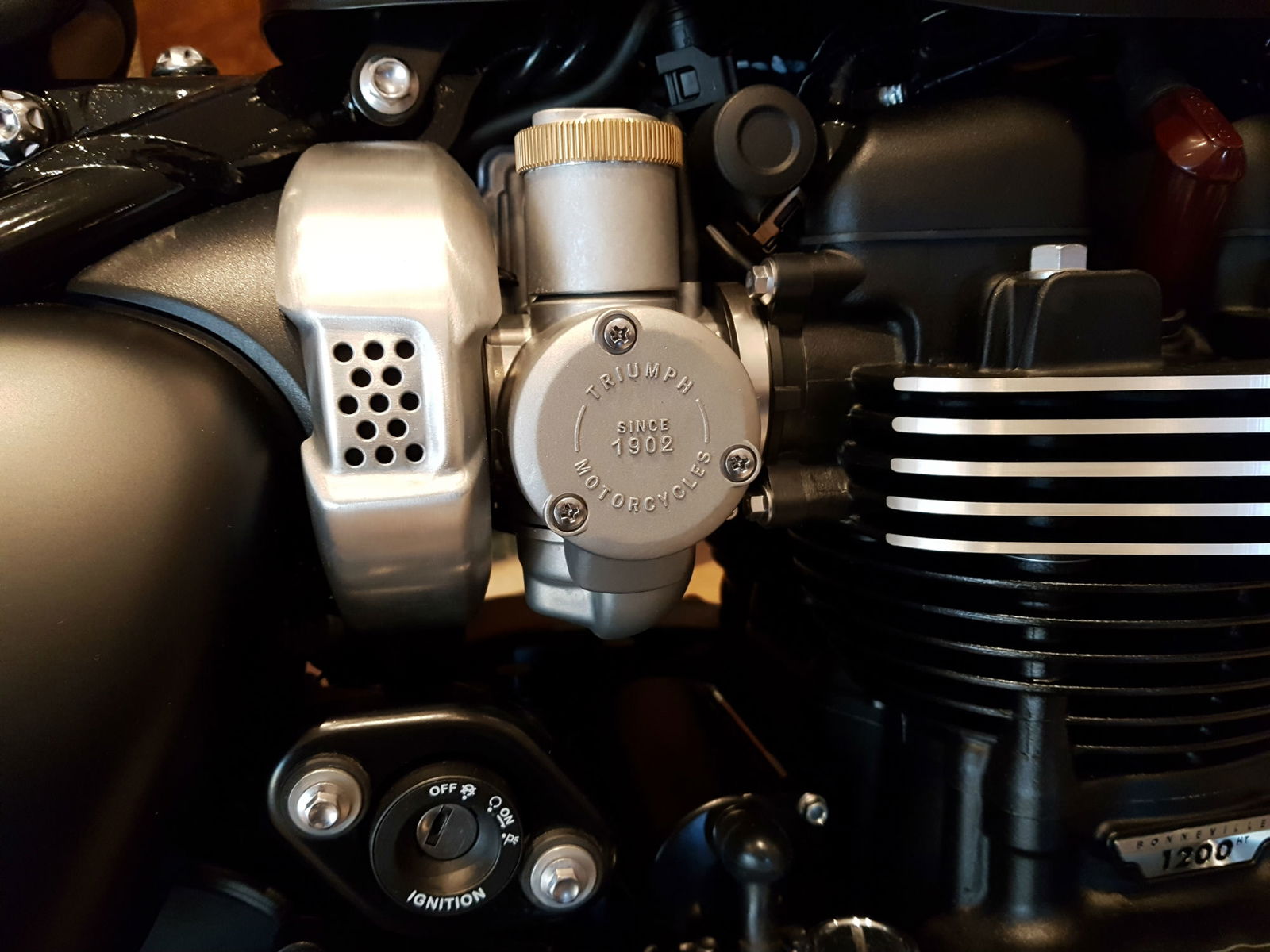
If there’s anything a little underwhelming about the Bobber Black, it’s that an interesting new styling choice in the Bobber line-up is all it really is.
You get a more powerful front brake but otherwise the experience of riding does not seem to have dramatically altered. It’s as though Triumph thought, ‘The Bobber’s selling well. Let’s make it again.’
The Speedmaster that’s on the way, a Bobber you can carry a pillion on – now that’s a new model.
Don’t let that put you off. There’s nothing wrong with being a lot like the original Bobber.
When we tested it against the Thruxton R earlier this year, we made it our winner. Although the Thruxton R is easily the fastest, the Bobber is the one that goes faster than you feel it ought to.
That’s a pleasant surprise every time you get on the Bobber. And this is a Bobber – in black.
Triumph Bonneville Bobber Black specifications
- Model tested: Triumph Bobber Black
- Price: £11,650 in shiny black or £11,775 in matt black (Bobber starts from £10,600)
- Engine: 1200cc liquid-cooled parallel-twin
- Power: 77hp @ 4,000rpm
- Torque: 78lbft @ 6,100rpm
- Dry weight: 237.5kg (Bobber 228kg)
- Frame: tubular steel twin cradle
- Brakes: twin 310mm front discs with two-piston Brembo sliding calipers, rear 255mm disc with single-piston Nissin sliding caliper.
- Tyres: Avon Cobra, front 130/90-16, rear 150/80-16
- Tank capacity: 9.1 litres
- Seat height: 690mm in lowest position

